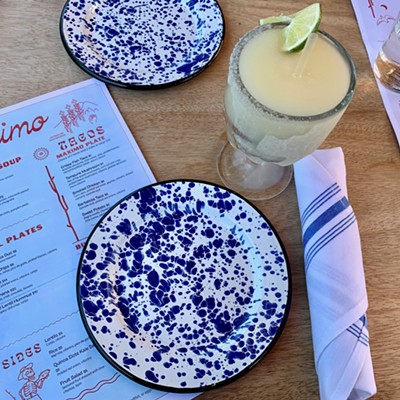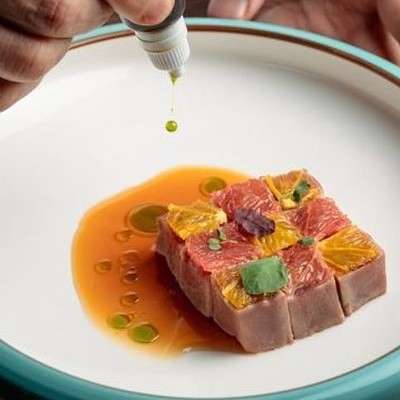Valentine's Day came and went. You cooked some fancy meal with your significant other, uncorked a bottle of wine, and then after dinner, fed each other bon bons by the fire. Okay, realistically, there was no fire because Houston just hasn't stayed cold this winter. But all the other parts really happened, right?
My Valentine and I did, in fact, cook a fancy meal together, and we did open a wine bottle a former dinner guest had left on our wine rack. But because it was Tuesday and we both had to get up early the next day, we only drank one glass each. Okay, so the wine also happened to be not so delicious, but I like to think we were just that responsible.
Of course, with great responsibility comes not-so-great leftover wine. Instead of pouring the wine down the drain, however, why not use it for cooking? Sure, they say you're not supposed to cook with a wine you wouldn't drink, but recession tells me not to waste anything, even that bad wine someone left at my place.
If your choice of wine was a cabernet, go here to get ideas. Got some leftover white wine instead? Read on, and see what chardonnay can do for you.
What is it?
Chardonnay, which originates from the Burgundy wine region of eastern France, is America's top-selling dry white wine. It is made from a hybrid of pinot and Gouais Blanc green grapes. Chardonnay grapes are known for easy cultivation and adaptability, giving it a high yield worldwide. (This high yield means you can get a relatively good bottle of chardonnay for under $15.) Because chardonnay is highly malleable, there is no single distinct quality to it; the taste characteristics often depend on the region where it's grown and the winemaker's method. Flavors can range from buttery oak to the fruitiness of apples, pears, and melons.
How do I use it?
First and foremost, you can pair it with food: white meats (i.e. roasted chicken, turkey, and that other white meat, pork); dishes heavy in garlic, butter, or cream; spicy southeast Asian cuisine such as curries; smoked fish; and so on. When cooking with chardonnay, think along those same lines. Use it to make a white pasta sauce or add it to a pot of shellfish to bring out the flavor.
Where can I find it?
In the wine section of a grocery store or Spec's. Store opened wine corked in your refrigerator. Opened wine eventually turns into vinegar.
Recipe: Mushroom Risotto Who said you can't make a risotto well at home? While this recipe involves laborious stirring, the end result is worth it. (Plus, you're toning your arm muscles at the same time.) Use your leftover chardonnay as the dry white wine called for in the ingredients. Note that the directions say it should take 15 to 20 minutes of stirring for the liquids to fully absorb, but from my experience, it usually takes three times as long. Time to buy one of those foam kitchen mats for comfort.
What do you do with your chardonnay?
Follow Eating Our Words on Facebook and on Twitter @EatingOurWords





